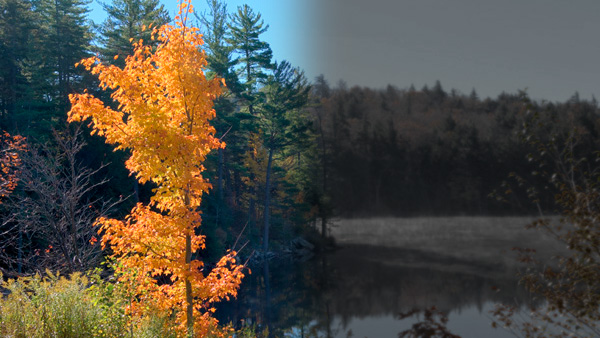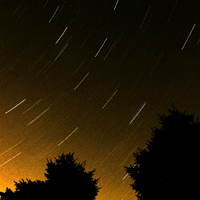Why Do Colors Fade in the Evening?
Our eyes have an amazing ability to see well over very large ranges of brightness from starlight to bright sunlight. The change in size of our pupils helps us to see well in both bright and dim light, but there are other features of our eyes at work as well. In fact, we really have two visual systems in each eye. One is best when there is plenty of light, can see fine details (like reading a book), and can see color. The other cannot see color at all, but is much more sensitive to light so it works well when there is little light available. That system also cannot see fine detail well at all. That's why we can't read books in the dark!
There are two types of cells in our eyes (technically, two types of photoreceptors in our retinas) that create these two systems. One type are called cones. The cones produce color vision, work in bright light, and resolve fine details. The other type are called rods. Rods cannot see different colors, only light and dark, but are very sensitive to light. To get this added light sensitivity, rods have to capture light across large areas of the eye and that means they cannot see fine details.
As night approaches and the amount of light in a scene drops, our vision system automatically switches from using the cones to using the rods ... and our perception of colors fades away.
![]()
Explore the NEXT TOPIC at this level.
Explore the NEXT LEVEL on this topic.
Ever wonder ... How does the light affect how bright a color appears?
Updated: Apr. 19, 2011

